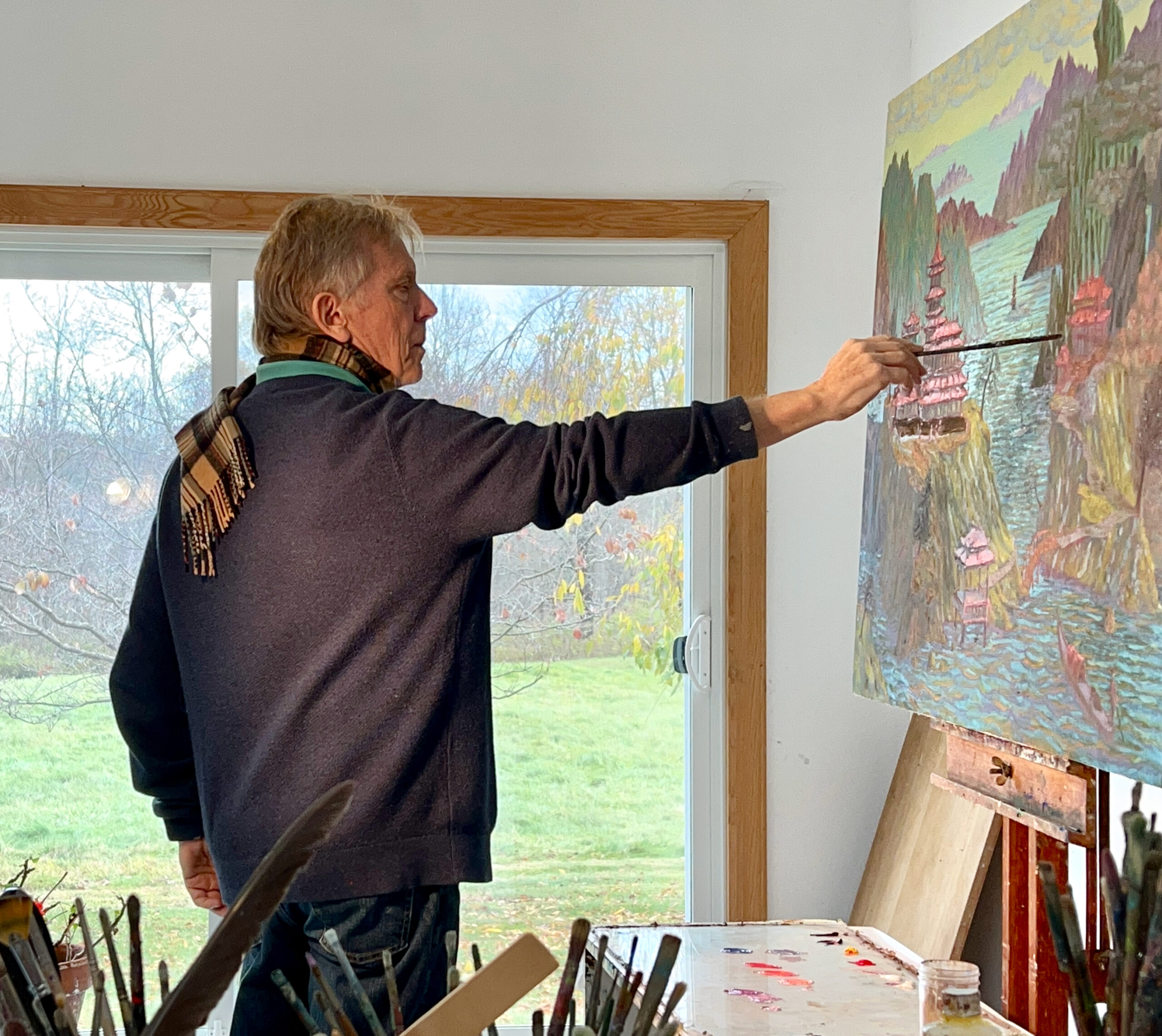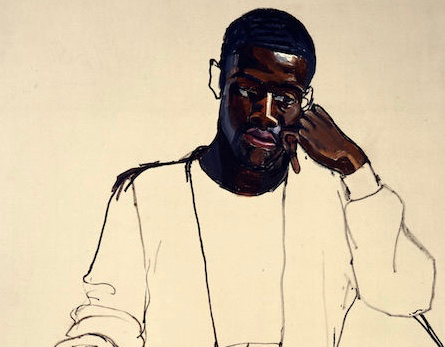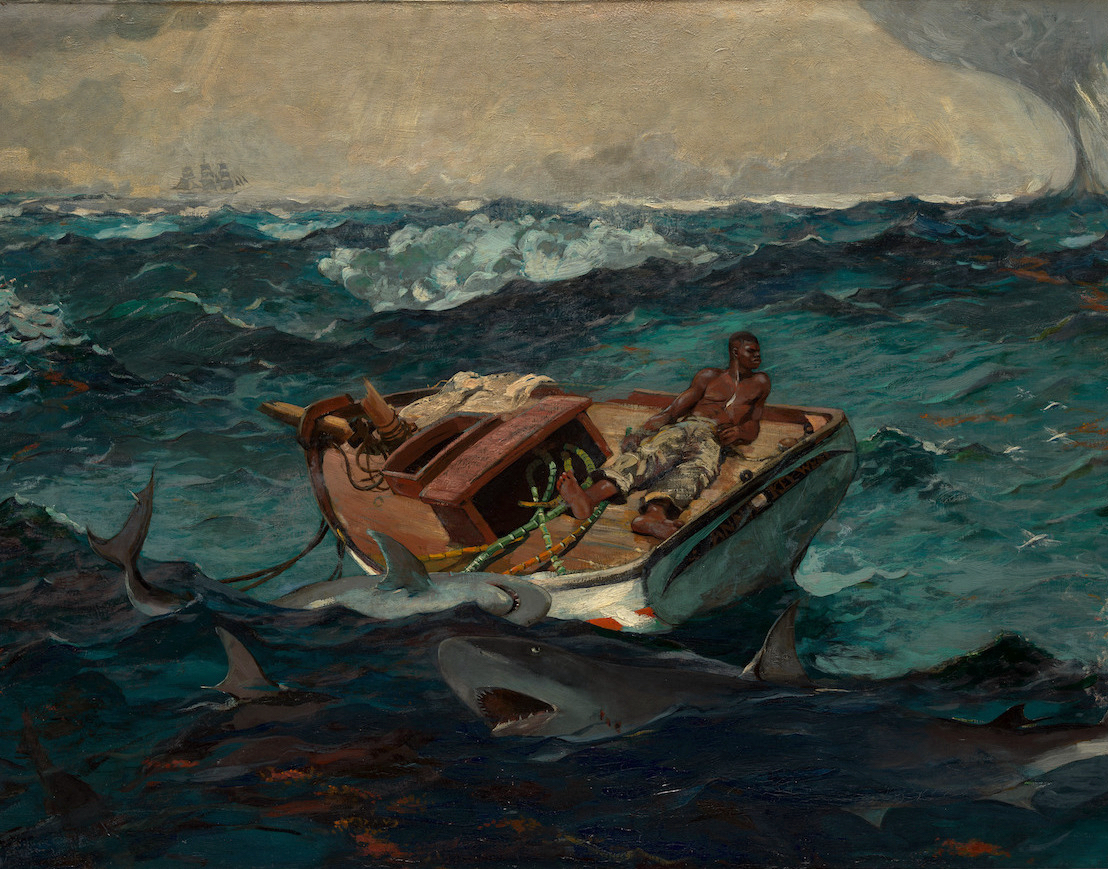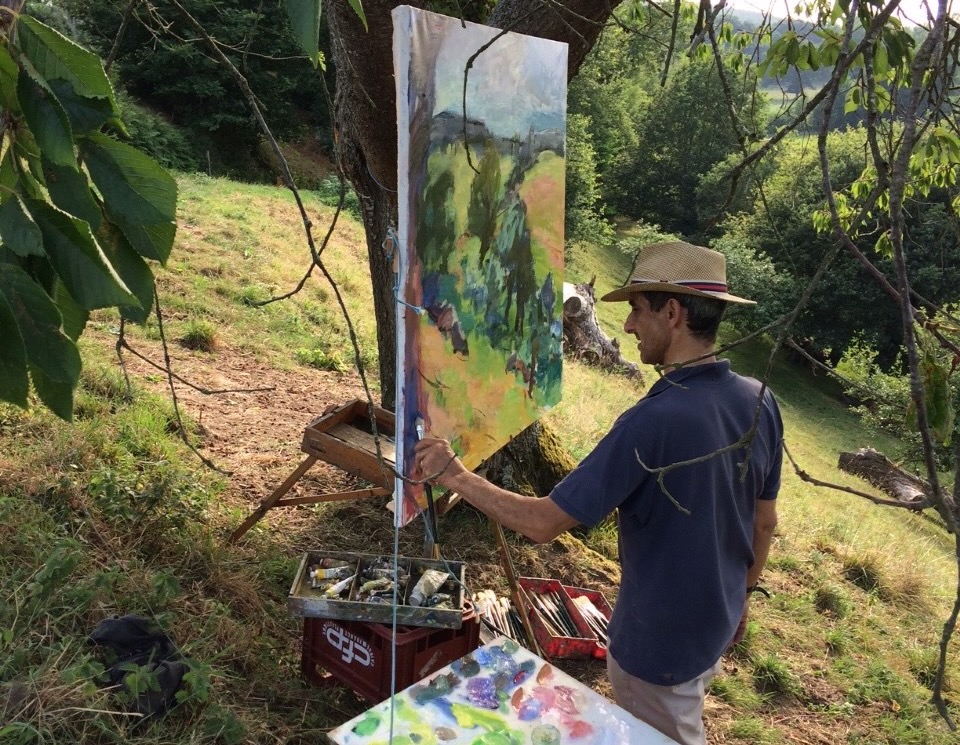
At what age did you decide to become an artist?
When I was a small child, I was always entranced by pictures. I mean in a literal way; I would gaze at an illustration in a book and enter the world of the image, not only the action and setting but also its atmosphere, the particular flavor of the world it represented. This was also true of the stained glass windows in my father’s church where angels and saints emerged and glowed in the shadowy spaces above the nave. And then, in a book on astronomy in my father’s study, I came upon a reproduction of Tintoretto’s Origin of the Milky Way. It was only a black and white reproduction, and I had no idea who Tintoretto was, but the soft, effulgent world of naked gods and goddess floating in a darkly clouded sky felt exciting and strange in a new and alluring way. Later, I would get to know the painting itself because it hangs in the National Gallery in London, and it remains one of my favorites. I don’t know if that experience was the catalyst that made me decide to become an artist, but by the time I was a teenager I knew that I would have to find a way to have a creative life. It was the late sixties and a conventional career looked rather dull.
How did your parents react when you told them you wanted to be an artist?
They were upset. My father was a Church of England clergyman and had high hopes for my following in his footsteps. I was a good academic student, and he felt I’d be wasting my time. He arranged an interview for me with a career counsellor who carefully explained to me that I would never be able to make any money in art. I wasn’t impressed. I went to art school full-time at the age of sixteen and never looked back. To my father’s credit, he didn’t continue to oppose me. Perhaps we were alike in a way; he had given up a career as an engineer to become an impoverished clergyman.
Who are your favorite artists?
This could be a very long list, but if we leave out most of the great names I find myself returning often to the Rococo painters, Fragonard, Watteau, and Hubert Robert. There’s a kind of sad, mysterious, and wistful poetry in their work that touches me. Amongst contemporary painters I greatly admire the work of Lisa Yuskavage and Anselm Kiefer.
Who is your favorite artist whose work is unlike your own?
Francis Bacon. He found himself a whole new way to paint.
Art book you cannot live without?
I’m lucky to have amassed an extensive collection of art books. I often pick up a large book on Renoir that one of my students kindly gave me some years ago. Renoir was such an exquisite painter. He’s out of fashion now, of course, and many people tell me they find his work too saccharine. But I feel he’s one of the most sensual and delightful painters who ever lived.
What is the quality you most admire in an artist?
There are many different enterprises open to artists and all require somewhat different abilities. What impresses me most is how an artist in any genre can develop and express a compelling vision, create a distinctive world of some kind. Very few artists manage it. No one could have imagined Matisse’s world before Matisse or Van Gogh’s before Van Gogh. And yet their visions seem almost inevitable, a necessary part of our cultural world. It’s very mysterious.
Do you keep a sketchbook?
Yes — I’m an avid sketchbook user. Usually I draw in pen and ink — sometimes with wash. It’s always a pleasure.
What’s your favorite museum in all the world?
The National Gallery in London. It’s the collection I grew up with, so looking at the glorious paintings there also carries some nostalgia for me. It feels like home and some of the images are always with me. Piero’s Nativity and Tintoretto’s St. George and the Dragon for instance, not to mention the incomparable The Arnolfini Portrait, by Van Eyck and Rembrandt’s eerie portrait of Margarita Tripp. When I was a student, the place could still be very sleepy and most of the guards were ex-servicemen whose movements added a curiously military touch to the place. It’s been transformed since then with the addition of the Sainsbury Wing and much better lighting and amenities, but the old galleries feel much the same in spite of the mobs of tourists. In fact some of the paintings have remained in the same places I was used to finding them fifty years ago.
What’s the best exhibition you have ever attended?
Well of course I’m tempted to name one of my own. But Acquavella Gallery in New York mounted an exquisite exhibition of paintings by Pierre Bonnard earlier this year that was about as good as it gets. Bonnard was a truly an adventurous spirit when it came to painting, completely unafraid to follow the picture wherever it might be going. And such a lovely touch with the paint.
If you were not an artist, what would you be?
I would probably be a writer. I have done a great deal of professional writing for the art magazines and published one short work of fiction as well as one book, Universal Principles of Art. I did consider branching into film-making at one point and made a feature length documentary, “The Progress of Love,” featuring Fragonard’s suite of paintings of the same name. It’s available for free on YouTube if you are interested.
Did you have an artistic cohort that influenced your early creative development?
I think I was most influenced by one or two students I went to school with early on. They could draw extremely well having had better art teachers than I had and I learned a lot by watching them. Later on, when I went to graduate school at the Royal College of Art, I really didn’t feel part of any grouping. Everyone seemed to be doing very different things, and few of us stayed in touch in the years afterwards.
What is one thing you didn’t learn in art school that you wish you had?
I’m very grateful that I was required to do so much drawing early on. And grateful too that I was exposed to such a wide range of activities from product design, to print making, sculpting, textile design as well various projects in conceptual art. We had fine art history teachers, and several gifted painters and I’m much in the debt of my undergraduate tutor Michael Chilton, a marvelous colorist. However, while I had a long and very rich art training, the one thing we were not schooled in was the business of art. I left art school extremely ill-informed about art as a business.
What work of art have you looked at most and why?
In my early years in New York, I spent quite a bit of time looking at a painting of Parc Monceau by Claude Monet that hangs in the Metropolitan Museum. It’s a textbook example of how to orchestrate color and light. Monet’s judgement of color relationships, his canny manipulation of warm and cool oppositions, and the satisfying composition with its contained central space, taught me an enormous amount about painting.
What is your secret visual pleasure outside of art?
One of the gifts of being an artist is that you see a great deal more than most people. You become sensitive to the myriad nuances and shifts in color, tone, texture, and light that present themselves more or less every time you open your eyes. When I first started painting I found this could be sometimes overwhelming. Now I find I can enjoy simply contemplating a scene, slowly absorbing the sheer splendor of the world. Perhaps this is also part of getting older, the realization that simply being here is a strange and extraordinary gift.
Do you listen to music in your studio?
Sometimes. I vary between classical music and a little rock and roll. I sang in the church choir when I was a boy, and I still enjoy choral music. More often I listen to an audio book— usually genre fiction that isn’t too demanding. Often I just work in silence.
What is the last gallery you visited?
The Francis Lehman Loeb Gallery at Vassar College. They have a lovely permanent collection including a stunning Hubert Robert and fine paintings by Balthus, Giacometti, and Picasso.
Who is an under-rated artist people should be looking at?
I’m surprised that more Americans aren’t familiar with the paintings of the English artist Gwen John. I also think that Americans don’t give Albert Marquet his due. Also Francis Picabia seems a more seminal figure in twentieth century art than most people give him credit for. Amongst more recent artists my old friend David Beck, who died not long ago, left an extraordinary body of work that amounts to a major contribution to American art. He received some recognition with shows at the Smithsonian Museum of American Art, but I think he should be more widely known.
What art materials can you not live without?
Well, it would be a grim life without oil paint although I do think I’d manage to press on.
Do you paint/sculpt/create art every day?
No. Early in my career I worked religiously six days a week, piling up all kinds of hours. These days I don’t find that approach particularly useful. If I work too much, things can become repetitious, and the whole enterprise can start to feel onerous. So now I work when I feel moved to work, an approach that results in spurts of activity separated by periods when nothing much is happening. It’s been much more successful creatively.
What is the longest time you went without creating art?
I’m not sure. Perhaps two months.
What do you do when you are feeling uninspired?
Anything but a painting. I know that soon enough I will feel moved to paint and that I just need a little time for things to percolate. Meanwhile, I enjoy many other things: writing, playing the piano, traveling, teaching. One of the words I’ve come to dislike most in relation to art-making is “practice.” So often we read a reference to an artist’s “practice” as though there is some set of activities that he or she habitually goes through. But I don’t think this is how creativity works. As an artist I reserve the right to change everything when I choose to.
What are the questions that drive your work?
I don’t think of my work as driven by questions. It feels more as though it’s driven by a need to grasp the world around me in different ways, to take hold of it, to own it in some more present way.
What is the most important quality in an artist?
I’m not sure that there is a single quality that distinguishes the best artists. If pressed I’d say a fearless imagination.
What is something you haven’t yet achieved in art?
Like many artists, there is a part of me that always believes that the next picture will be something glorious, ravishingly sensual, revelatory, radically creative, poetically captivating and absolutely stunningly beautiful. And like many artists I find that the work generally comes up slightly short of the mark.
What is the best thing about art in the era of social media?
Social media is a bit of a two-edged sword. On the one hand it’s wonderful to see so many people’s work in one place and to be able to follow artists you are interested in. You can also network with others if you choose to, and you can keep everyone informed about what you are up to. You might even sell a picture. On the other hand you are exposed to a monstrous avalanche of artists, good, bad, and mediocre that can make the whole experience overwhelming. Worse, you are subjected to avid self-promoters of dubious talent as well as cat videos, hucksters, phonies and downright criminals. So it can be both useful and annoyingly depressing. I find I look at it less and less.
JOHN A. PARKS will be teaching a two-day workshop Acrylic Bootcamp-Basic Strategies for Getting the Best Results, on November 25 and 26, 2023, at the Art Students League of New York.




